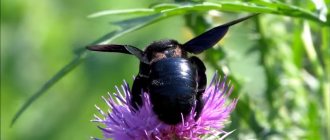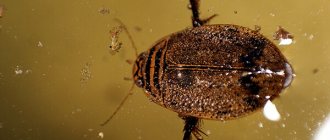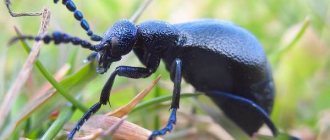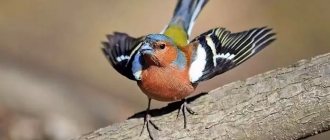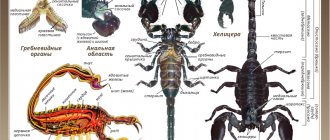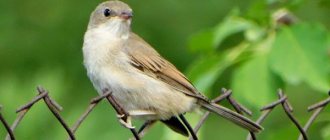Description and features
All over the world, scientists identify more than 20 thousand species of bees. Among these countless insects, the carpenter bee occupies a special place. The official name of this insect is violet xylocopa. In natural conditions it is quite difficult to see it, but in the photo the carpenter bee looks amazing.
Its distinctive feature from its counterparts is the color of the body and wings. The bee's body is black, and its wings are dark blue with a purple tint. The bee is covered with short black hairs. The mustache is also black, but has a reddish tint on the inside.
Distinctive features also include shaggy legs and large, powerful jaws that are capable of grinding fairly strong materials. The common carpenter bee always chooses either a tree or anything made of wood as its home.
The bee collects pollen and pollinates plants several times more efficiently than other flying insects, since it has a thick layer of hairs on its legs. But if an insect has settled next to a person’s home, you should not expect anything good. Trees and furniture can be damaged forever.
Interestingly, in terms of its size, the carpenter bee stands out significantly from other bees. Its average length is about 2.5 centimeters. Large individuals reach 3 centimeters. These sizes make the insect look like a bumblebee or a huge fly. It is very easy to determine that a bee is nearby, since the wings, although not large compared to the body, work very actively and make a loud buzzing sound.
It is worth noting that a carpenter bee never attacks a person without reason. As a species they are not very aggressive. Only females have stings. However, of a carpenter bee sting . By biting, insects inject poison into the wound. It provokes severe swelling, which can last up to five days. The poison affects the human nervous system.
When bitten, side effects such as nervous shock often occur. You should be careful - a bee sting on the neck is fatal for both humans and animals, as the airways become swollen. Oxygen supply is blocked and death can occur within minutes if emergency medical care is not taken.
How dangerous is a carpenter bee sting?
The insect is not aggressive towards humans. But this behavior is observed until a real threat appears. If this is not the case, the insect does not pay attention to the presence of a person and continues to go about its business. Drones don't attack at all. The female's venom is quite dangerous due to the fact that it causes large swelling of the tissues. A bite to the throat is fatal.
Kinds
Xylocopa is a very ancient bee. It existed long before modern civilization and is considered a kind of “living fossil.” Scientists count more than 700 species. The carpenter bee lives in different parts of the planet. In the vastness of America you can find an amazing subspecies that is completely black in color.
They are much larger than their Russian relatives and are particularly aggressive. Cases of this bee attacking a person are often recorded. The black carpenter bee to collect pollen twice a day - at dawn and in the evening, at dusk.
In European territory, carpenter bees are found in Germany. Surprisingly, this particular species is practically immune to various diseases. They have strong immunity. The harshest and most dangerous continent, Africa, has its own species of insect. It is mainly found in Tunisia and Algeria.
A distinctive feature is a flat, wide belly and long mustache, about 6 millimeters. African carpenter bees are very aggressive and dangerous, in principle, like all animals on the continent. In addition, after stinging a bee, it smears its victim with propolis, which is very difficult to wash off from the skin and clothes.
May cause a severe allergic reaction. You need to be very careful, avoid the bee and under no circumstances provoke it with sweeping movements of your arms and legs. Bumblebees are also considered carpenter bees.
Many scientists are inclined to believe that bumblebees are a subspecies of xylocopa. But they have a traditional yellow and black color. The level of aggression is very high. They can attack both animals and humans without warning.
Caucasian
There are two types of Caucasian bees:
- Yellow. Zoned in Transcaucasia. Yellowish color. Very thieving. Low frost resistance. The queen produces up to 1,700 eggs per day. Swarming is strong. What swarming entails and how to deal with it - read here.
- Gray mountain. Habitat: Caucasus and Transcaucasia. Trunk length – 7.2 mm. This is a record length for bees. Peaceful, swarming is weak. They produce a lot of propolis, actively search for honey, quickly change honey plants, and pollinate legumes well. They fly in rain and fog. Average winter hardiness, queen productivity - up to 1500 eggs.
The breed is thermophilic, so it is of interest only to beekeepers from the southern regions.
Lifestyle and habitat
The carpenter bee is an insect that prefers warm climates. That is why you practically cannot find it in the northern regions and continents, where low temperatures prevail. Favorite places to build a home are steppes and forests. Especially many species of xylocopa live in the southern parts of Russia and the Caucasus.
Perhaps this is the only type of bee that prefers to live on its own, without even forming small families. They do not gather in swarms and live individually, choosing their habitat to suit their taste. Most often these are places where there is dead wood. The nest can be found in a telegraph and electric pole, in a wooden house, in the walls of outbuildings, even in an old closet.
When choosing a place of residence, the carpenter bee is not at all guided by the availability of food. This is not the main thing for her. Possessing powerful wings, the insect is able to fly great distances every day to obtain nectar. Hardy insects are able to move away from home to a distance of more than 10 kilometers and return back.
As a rule, insect activity begins with the onset of the first stable warm days, early or mid-May. Active flight continues throughout the summer months and ends at the end of September, when the temperature at night drops below five degrees. In rare cases, if weather conditions permit, the common carpenter bee continues to operate in October.
Interesting Facts
The carpenter bee is a peaceful insect. She can use the poisonous sting for self-defense or to protect future offspring. You should not touch her nest, so as not to provoke the bee's wrath.
A bee can become food for insectivorous birds, frogs, and spiders. But thanks to their large size and durable housing, the carpenter rarely becomes their prey.
The carpenter bee is one of the most ancient insects on Earth. It appeared about 100 million years ago and is a living relic.
This species of bee is listed in the Red Book of Russia. The reduction in numbers is associated with cutting down dead wood and applying paints and preservatives to the surface of wooden posts and buildings. The list of protective measures includes the identification of bee nests, their preservation, as well as a ban on catching these rare insects.
Nutrition
The purple carpenter bee does not have any special nutritional requirements. She, like all her relatives, eats nectar and pollen. In search of enough pollen, a bee searches about 60 flowers a day. Bees are especially fond of acacia and red clover, whose flowers contain twice as much pollen.
The carpenter bee collects pollen and uses its own saliva to soften it. The resulting composition is diluted with nectar. It is stored in special honey grooves and serves to prevent pollen from falling off during long flights.
Bee saliva contains colonies of microorganisms that immediately begin to work as soon as pollen enters the grooves. The fermentation process begins. It turns pollen into the so-called bee bread - bee bread. Bee bread is consumed by both adult bees and newly born bees.
Bees producing offspring, thanks to secret glands, soften the beebread and turn it into royal jelly, rich in minerals and vitamins. The larvae feed on it. Royal jelly is a very valuable substance that people use in cosmetology and medicine.
Species diversity
The purple bees are called Violacea, and the blue bee is Xylocopa Valga, that is, “common xylocopa.” By the way, her wings are not blue, but brown, but there are colored scales on the outside. These insects are not found in Siberia, since it would be cold for them to spend the winter. And of course, male carpenter bees hatch from unfertilized eggs, just like drones of the genus Apis.
An interesting species to study would be Caffra. The black individual with two stripes is a female, and her gentleman looks more like a bumblebee.
Species Xylocopa Caffra
When collecting nectar, males guard the perimeter of the area, not allowing strangers to fly into it. They protect females from individuals of the same species - that is, from “alien” males. Well, the females carry acariform mites in their abdominal cavity, which are then needed to clean the bamboo of fungus.
The huge and completely black bee with brown wings is a female of the Sonorina species. The male looks different.
Species Xylocopa Sonorina
The following is noteworthy here: egg laying occurs all year round. Bees only take a break when the weather is bad... Typical habitat: Mariana Islands and Hawaii.
In America, that is, in Canada and the USA, the Virginia variety is better known. And the species Xylocopa Iris lives in Europe. Closer to Mexico, Xylocopa Mexicanorum bees are found - their body length does not exceed 15 mm. And then there is the species Varipuncta, known in California. This species is characterized by high mortality among males.
In India, 15 similar species belonging to the genus Xylocopa are common. What is the source of error: noticing that the bees are black, they are immediately classified as the Bhanvra species. Such an action may be wrong! Bhanvra bees are easily confused even with the “purple carpenter”, that is, Xylocopa Violacea.
Reproduction and lifespan
The purple carpenter bee does not welcome any kind of neighborhood. With the onset of spring, it is time for bees to have offspring. The female takes a long time to choose a quiet, secluded place, moderately humid and warm. Most often, the choice falls on dry, rotten trees or shrubs, and prepares a separate nest for itself.
Bees have strong jaws. With her powerful jaws, the female gnaws out multi-level, gentle tunnels in the pliable tree. By the way, it was for the ability to build such “multi-room apartments” that this shoulder was given the name “carpenter”.
The moves that the female makes in the wood are distinguished by perfectly smooth edges. To an inexperienced person, it may seem like the holes were made with a drill. During construction, the female makes loud crackling sounds, which can be used to determine her proximity.
When the nest is ready, the female carpenter bee prepares a special mixture of nectar and pollen. The female places a drop of this composition in the compartment, lays an egg in it and seals the hole-room. Each such partition is the floor for the next “room”. The length of each stroke can reach 20-30 centimeters.
In this way, the bee lays ten to twelve eggs, and then hermetically closes the entrance to the nest. The sealant is wood mixed with bee saliva. The nectar composition provides excellent nutrition for the larvae, which emerge around mid-June.
One drop prepared by the female is enough for the larva until the fall, when it turns into a strong young bee. It is worth noting that the development time of larvae is not always the same. The male larvae are the first to reach the required age. In the nest they are located closer to the exit. Thus, by the time the weather warms up, all the larvae become adults.
During the first time after laying eggs, the bee jealously guards its nest, and after a few weeks it leaves it forever. In the fall, young individuals appear in the clutch, which do not immediately leave their shelter, but remain in it until spring, gaining strength. With the arrival of warm days, young bees gnaw through the partitions and fly away.
As for the female, with the arrival of autumn she either dies or overwinters and resumes her life cycle in the next season. Interestingly, bees do not hibernate. They tightly close their homes from the inside and hibernate while awake. Their food during this period is honey and nectar collected during the active summer period. Carpenter bees also do not hibernate, like their relatives.
Interestingly, the nests created by females never remain empty. More and more bees are using them. One nest can be home to ten generations of carpenter bees and only be abandoned once the wood has deteriorated.
How to get rid of wood bees in the wall of a wooden house using a gentle method
Black shemale
Few disinfection services will deal with black bees, as it is illegal. Therefore, the question of how to get rid of tree bees on your own becomes especially relevant. Given the circumstances, the only way to get rid of insects is through sound vibrations.
The woodcutter bee is very sensitive to noise. It is enough to turn on loud music near the proposed housing. Preferably a composition with low frequencies - high-quality bass. Blue bees will leave their wooden home on their own.
Drive away bees with low-frequency music
There is a more aggressive, but effective method.
Remedy for blue bees
How to deal with tree bees if noise does not help?
The easiest way to protect your home from these insects is with sticky traps for flying insects. But it is effective for single catching.
In addition to this, there are other means:
- If the pests are very annoying and pose a real danger to the health of the household, you can sacrifice one generation of them to ensure that they are not in the old holes forever. To do this, you need to fill the entire socket through the main passage with an aerosol carburetor cleaner or ordinary gasoline. At the same time, it is worth remembering safety measures with such toxic substances, especially when it comes to working with wood.
- Special pesticides, especially powder ones, are quite effective in destroying homes. The most commonly used are boric acid or carbaryl.
Important! The individuals themselves are not aggressive. If the carpenter wasp does not feel a threat to its life and the integrity of the “house”, it will not attack.
Benefit or harm?
There seems to be no benefit to carpenter bees. They do not benefit either man or nature. Many species are characterized by a less than responsible attitude towards the offspring: after laying, the nest is sealed and the female leaves it. This is what bees do that settle in bushes.
Tunnel in the bush
One thing can be said in defense of the “carpenters”: they inhabit dry or rotten wood. Caffra also cleans bamboo.
Any solitary bee or bumblebee is a very effective pollinator. All insects of the genus Apis are inferior in this indicator. Numbers:
- Osmia species Lignaria pollinates as many fruit trees in a day as 250 ordinary bees;
- For bumblebees, the characteristic number will not be 250, but, for example, 10-20. Carpenter bees are more efficient.
Insects of the genus Xylocopa are sometimes called bumblebees. There is nothing surprising here: the body size of “carpenters” always exceeds that of a bumblebee. This is not done only for some species, and they are rare.
